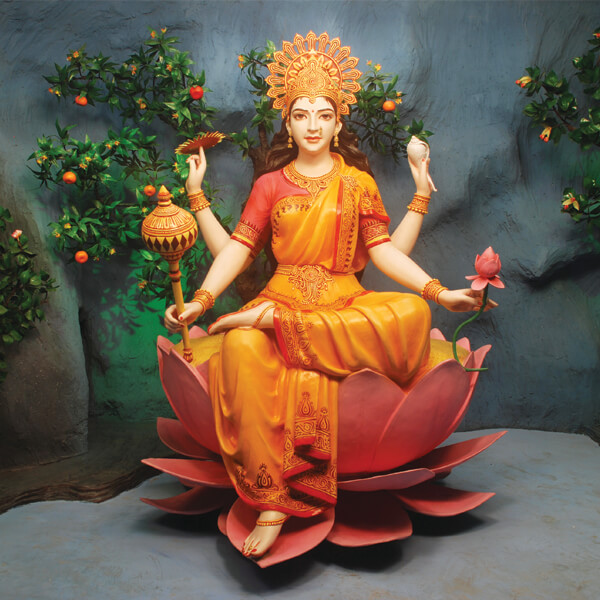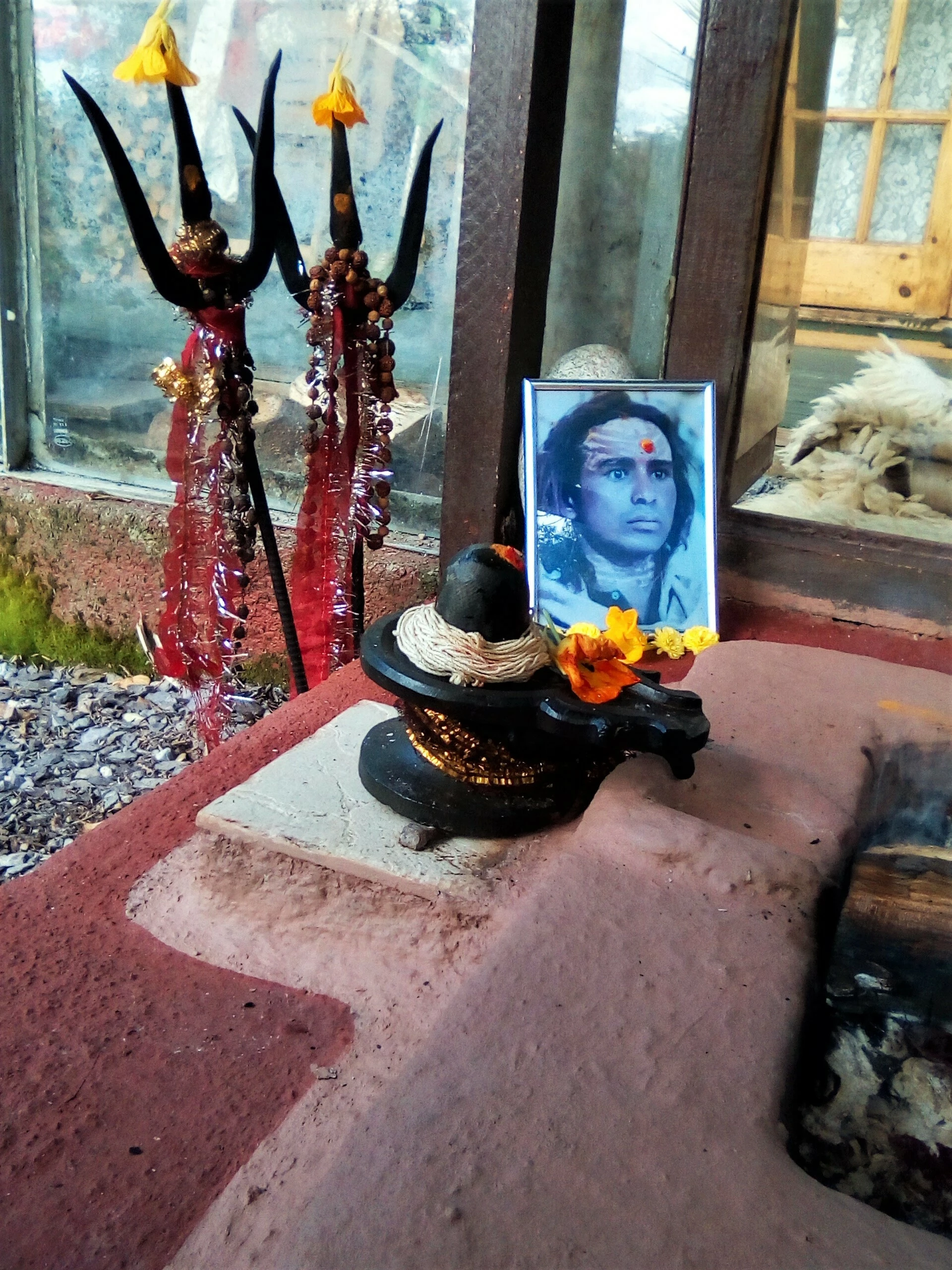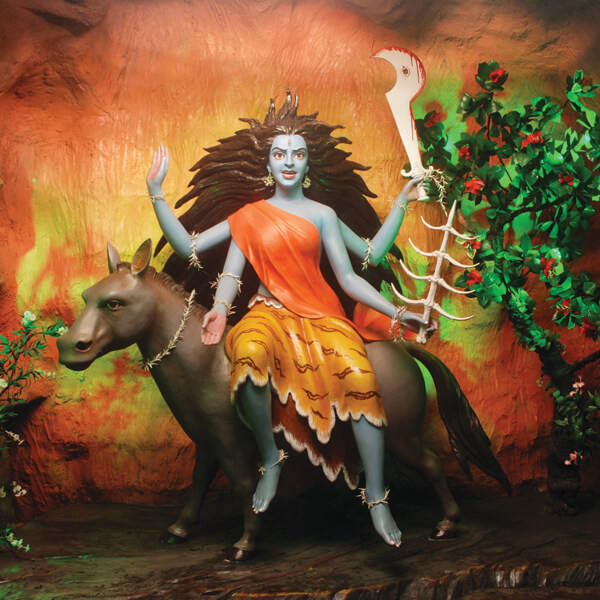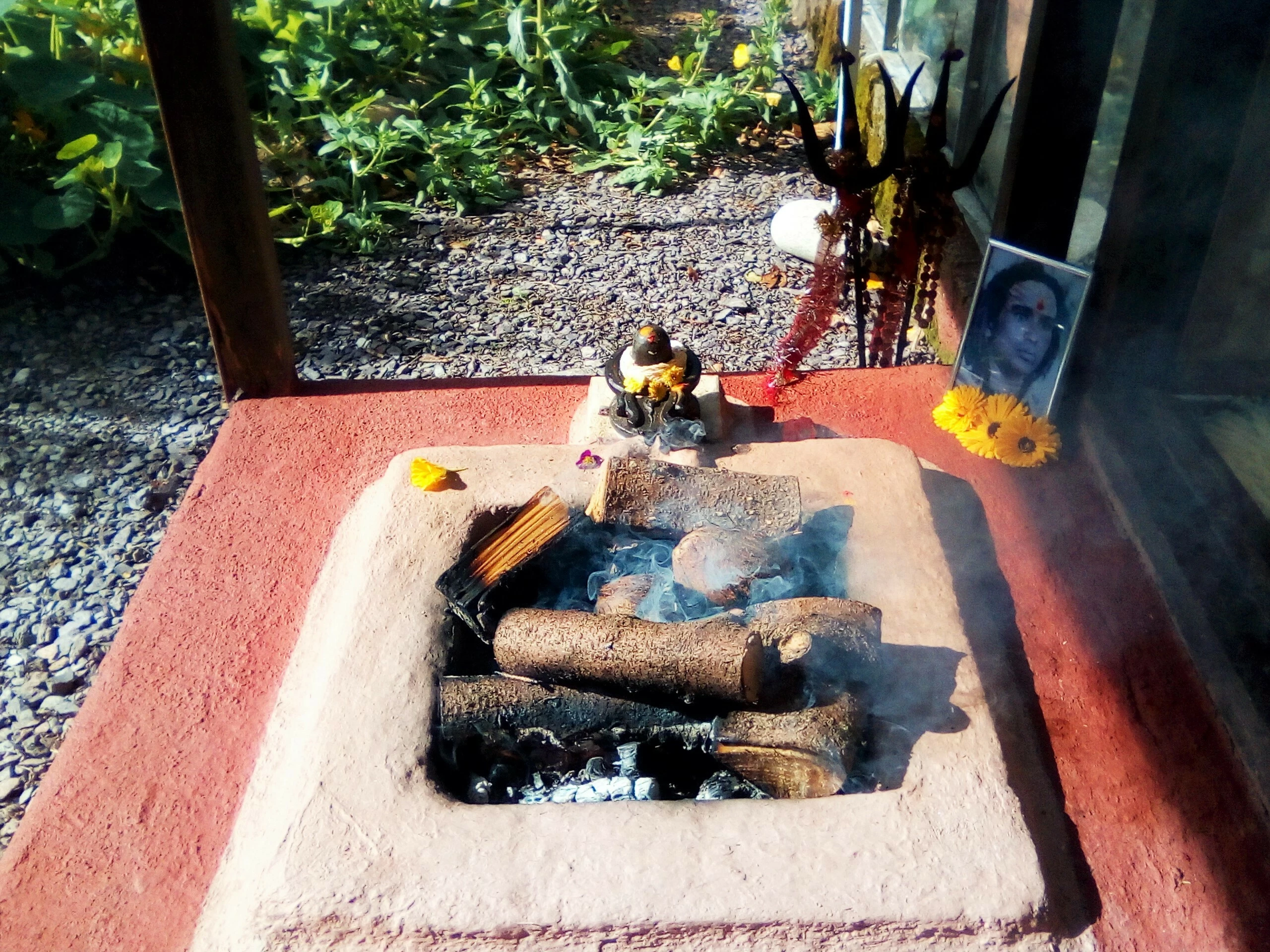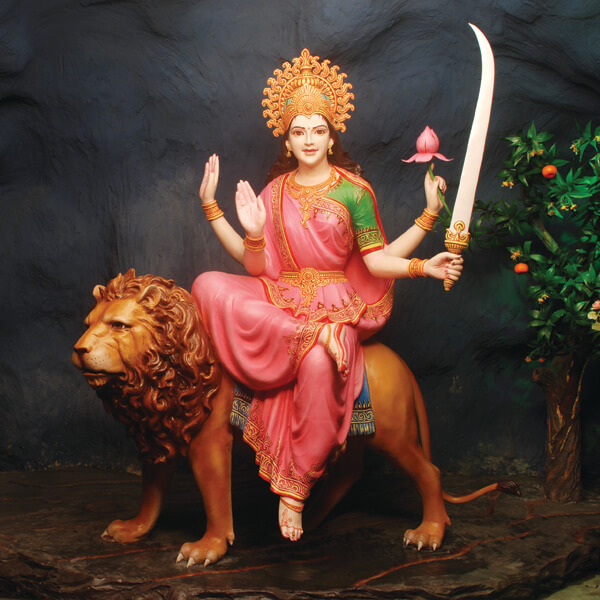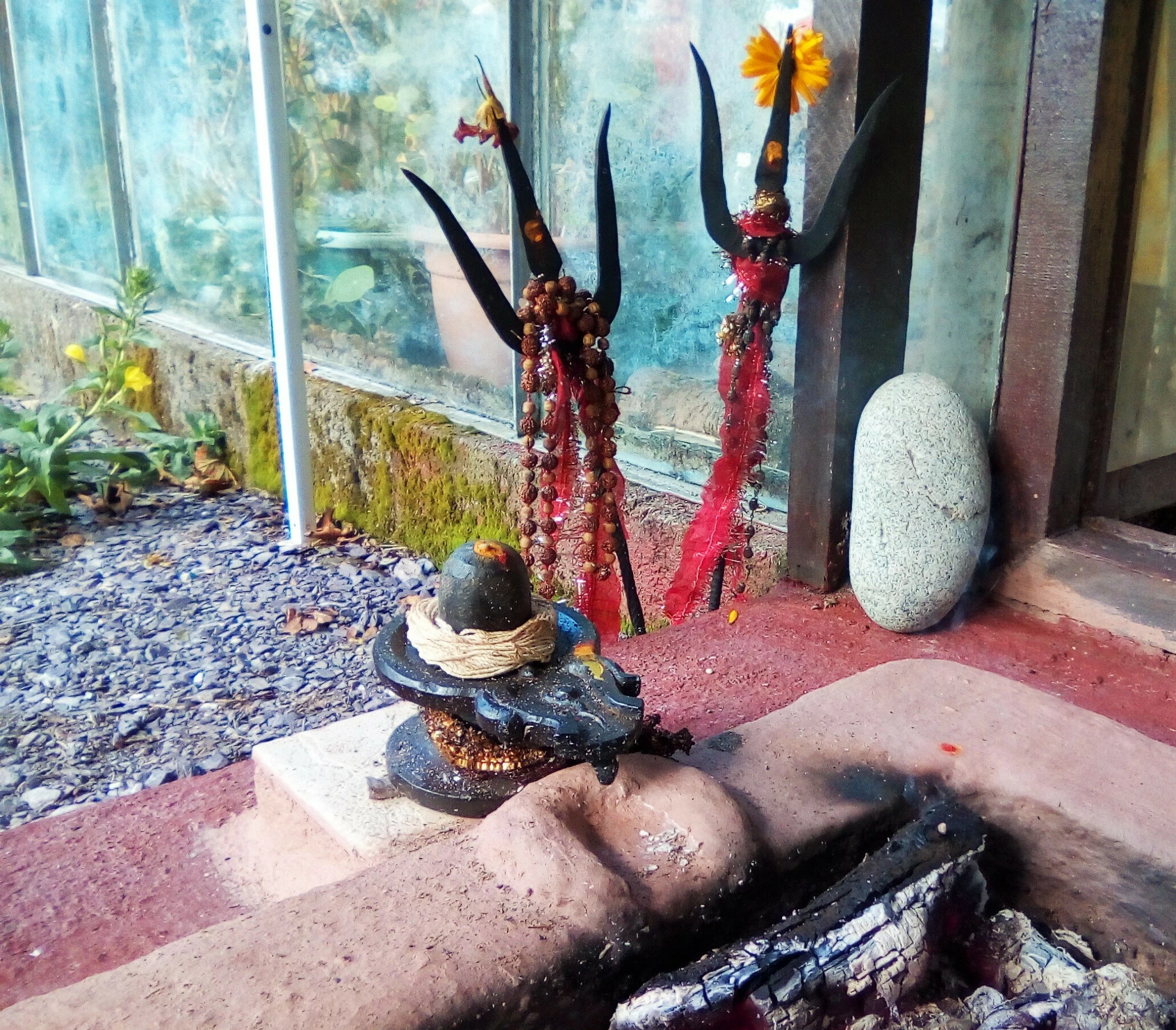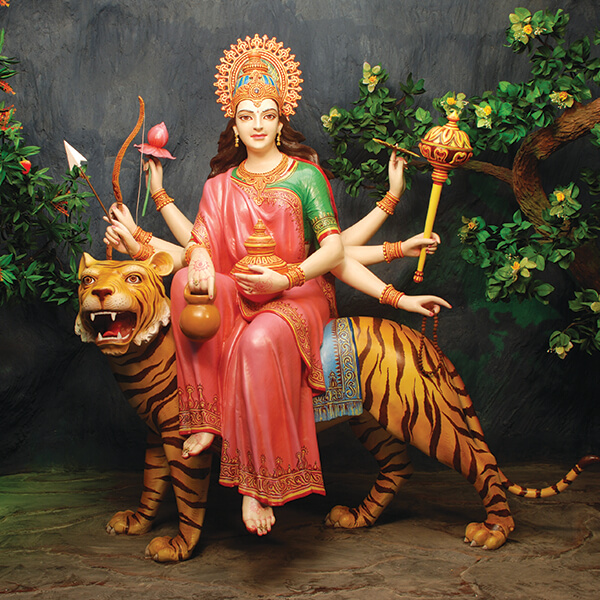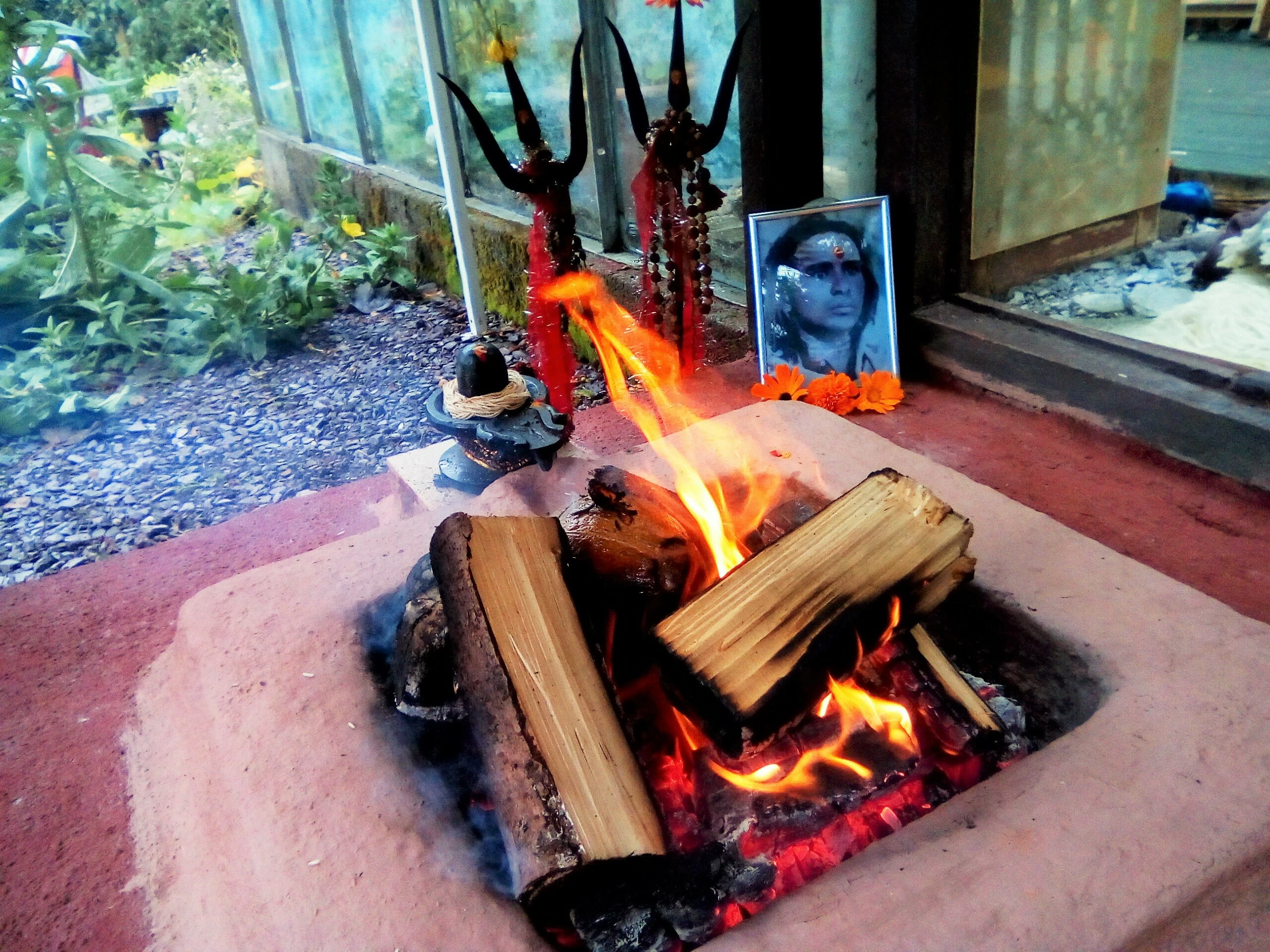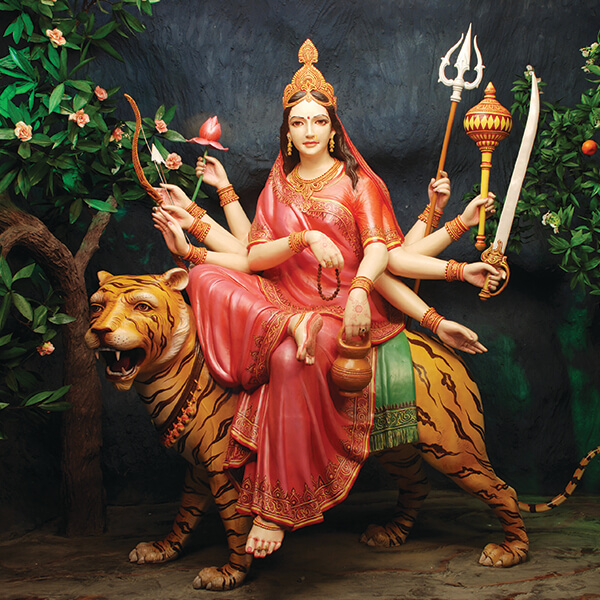#navaratri
![]()
Today is the Tenth day ( #Dassera – #Dusshera) the finale of the #Navaratri celebrations which are held for nine nights. All festivals are meant to remind mankind that they should cultivate noble qualities by engaging themselves in activities beneficial to one’s own self and society. Sai Baba made this reference to Navaratri and the Nine Planets:
As part of Navaratri celebrations, people worship different forms of divinity. You should develop sacred feelings and experience divinity. What is the inner meaning of Navaratri celebrations? These nine nights represent nine planets. Each planet has its own significance. However, these planets are not outside, they are within. If your feelings are impure and unsacred, the result also will be the same. You are responsible for the good and bad you think and experience.
The Planets
The Name of the Nine Planets are – Sun (Surya), Moon (Chandra), Mars (Mangala), Jupiter (Brihaspati, Guru), Venus (Shukra), Saturn (Sani), and finally, Rahu and Ketu. While the first seven are physical forms, Rahu and Ketu are called Chaya Grahas or Shadow Planets. Each planet influences our lives according to the position on the Birth Charts.
In simple terms, graha drishti means the glance, the view, the vision of the planet. It indicates what a planet can see from the house it currently resides in. There are 12 houses in astrology, each corresponding to a zodiac sign or rashi. Graha drishti, or the planetary aspect, is considered extremely important because planets can greatly influence each other. According to astrology, every object in the universe influences others. For instance, the Moon’s gravitational pull causes tides in the oceans on Earth. This is the basis of astrology, that celestial entities influence everything, from the smallest to the largest objects in the universe. This includes human beings. Each of the navagrahas has the capacity to affect different aspects of our lives.
#Goddess #Durga
Goddess Durga is a principal and popular form of Hindu Goddess. She is the warrior goddess, whose mythology centres around combating evils and demonic forces that threaten peace, prosperity and dharma of the good.
The festival of Navaratri is dedicated to Goddess Durga and her 9 avatars. On each of these nine days, there is worship of the nine different manifestation of Durga or Shakti. The ‘Nav Durga‘ or the ‘Nine Forms of Durga’ are pleased with special offerings and prayers. The significance of Nav Durga is narrated and reiterated in every Hindu household especially during the Navaratri nights as this is the time when Goddess Durga descends from the heaven to bless her beloved devotees.
Durga’s Name and Its Meaning
In Sanskrit, Durga means “a fort” or “a place that is difficult to overrun,” an apt metaphor for this deity’s protective, militant nature. Durga is sometimes referred to as Durgatinashini, which literally translates into “the one who eliminates sufferings.”
Significance of Navaratri
“The significance of Durga, Lakshmi and Saraswati has to be rightly understood. Three represent three kinds of potencies in man. Iccha Shakti (will power), Kriya Shakti (the power of action) and Jnana Shakti (the power of discrimination). Saraswati is manifested in man as the power of speech (Vaak). Durga is present in the form of dynamism (the power of action). Lakshmi is manifested in the form of will power. The body indicates “Kriya Shakti”. The mind is the repository of “Iccha Shakti”. The Atma is “Jnana Shakti”. “Kriya Shakti” comes from the body, which is material. The power that activates the body, which is inert and makes it vibrant, is “Iccha Shakti”. The power that induces the vibrations of’khchaa Shakti” is “Jnana Shakti” which causes radiation (of energy). These three are represented by the Mantra “OM Bhur-Bhuvah-Svah”. “Bhu” represents Bhu-loka (earth). “Bhuvah.” represents the life-force (also means conscience of man), “Svah” represents the power of radiation. All the three are present in man. Thus, Durga, Lakshmi and Saraswati dwell in the human heart.” Sai Baba. SS. 11/94. pp. 283 & 284


Goddess #Siddhidatri
Goddess Siddhidhatri

The #Ardhanareshwara form of Lord #Shiva; it is believed that Lord Shiva obtained all siddhis by worshipping Goddess Siddhidhatri.
As the nine nights represent the nine planets, we will be focussing on Navaratri and the nine planets with an account of one or another the planets for nine nights. For the NINth night of Navaratri, we will take the planet Ketu. The colour for the Ninth day of Navaratri (Navami) is #Peacock #Green, so we scribe in Peacock Green for this ninth day observance of #Navaratri. The #Goddess is #Siddhidhatri.
Today is the Ninth day (Namvami) of the Navaratri celebrations which are held for nine nights. All festivals are meant to remind mankind that they should cultivate noble qualities by engaging themselves in activities beneficial to one’s own self and society. Sai Baba made this reference to Navaratri and the Nine Planets:
As part of Navaratri celebrations, people worship different forms of divinity. You should develop sacred feelings and experience divinity. What is the inner meaning of Navaratri celebrations? These nine nights represent nine planets. Each planet has its own significance. However, these planets are not outside, they are within. If your feelings are impure and unsacred, the result also will be the same. You are responsible for the good and bad you think and experience.
#Ketu, the opposite node to #Rahu, came into being during the churning of the Ocean of Milk. The last gift of that churning was the emergence of the God of Healing, Dhanvantari, with the pot of amrit, the #nectar of immortality. Ketu and Rahu were whole at that time, in the form of a demon known as Swarbhanu, who engaged in subterfuge to obtain the nectar whilst it was being served out by Mohini. At that time Mohini was distracting the demons and giving the amrit to the gods. The deception was discovered by the Sun and Moon, who ran tale-telling to Vishnu, who promptly sent his discus and separated the head from the body; that body is today known as Ketu, South Node of the Moon.
In other legends, Ketu is known as the tail of the dragon. Ketu is considered to be signifier of limitlessness; Ketu is thought to be absent, wandering, disinterested, disengaged, disembodied, diffused, apathetic, directionless, destitute, beheaded, surrendering, abandoning, lost. We keep in mind that Ketu is a shadow planet, a karmic repository and an important agent on the journey toward the goal of life. Ketu (which means flag) – due the deep inquiry that this shadow planet is capable of actually flags important staging posts on the human journey of return to the Source.
Devi Siddhidatri is the ninth form of Navdurga and is worshipped on the ninth or final day of Navratri Pooja. In Sanskrit ‘Siddhi’ means perfection and the divine Goddess is revered to seek all types of Siddhi. The grace of Devi Siddhidatri can put an end to greediness and help to control and satisfy the desires of her devotees.
Goddess Siddhidhatri is portrayed wearing a red sari and sitting on a lotus flower. Her vahana (vehicle) is a lion. She is depicted holding a Gada (mace) in her upper right hand, a chakra in her lower right hand, a lotus flower in her lower left hand and a conch-shell in her upper left hand. It is said that one can even see a disc of light around her golden crown. This light is believed to instil devotion in the heart of devotees towards the Supreme Power and liberation from karmic bindings. Goddess Siddhidatri bestows occult powers on her worshippers and is therefore revered by beings from all three realms i.e. heaven, hell and earth.
It is commonly believed that Lord Shiva is half-male and half-female and this form of Shiva is worshipped as Ardhanareshwara. Ardhanareshwara is a combination of three words “Ardha,” “Nari,” and “Ishwara” means “half,” “woman,” and “lord,” respectively. According to Vedic scriptures, Lord Shiva attained all the siddhis by worshipping this Goddess.
Ketu and the Feminine
Ketu has very poor reputation garnered over the ages and in narrative, yet, is disposer of intelligence of a deep order. Ketu is also disposer of spiritual intelligence. We know that Ketu is disconnected from much of the world, very much an entity, and energy devoted to its own private realm, perhaps the cave of the mystic who intuitively comes to know what reality actually is. This is very much activity driven by the feminine within, that which is fecund, life-forming, life-giving and birthing into the new world. It is the feminine that nurtures and sustains us in the night-sea journey of the inner small self. It is the feminine that calls us unto the deep to explore the real, the touchstone of life, the life beyond imagination, feeling, attachment, delusion: the urstoff of what it means to be human. Ketu hears the deep calling unto the deep.
Significance of Navaratri
(On the life of Adi Shankara)
“The great Acharya was barely four years old at the time. His father, a devout scholar, used to offer daily worship to Goddess Raajeshwari every morning. Meditating before the Goddess with closed eyes, he would offer a bowl of cow’s milk to her. When he opened his eyes after meditation, he would find that bowl was only half-full, the other half having been accepted as an offering by the Goddess. One day, he had to go to a neighbouring village for three days. He told his wife to arrange worship of the Goddess in the customary manner with the offering of milk, with the young Shankara deputizing him in the worship. In accordance with his father’s instructions, the young lad sat in front of the Goddess in the sanctum and performed the prescribed ritual. After meditation, when he opened his eyes, he was astonished to see that the bowl of milk offered to the Goddess remained full. He felt sad and cried out: ‘Divine Mother! What wrong have I done? I cannot bear this punishment. Please show your grace on me as you did for my father.’
He prayed intensely for some time with closed eyes. When he opened his eyes he saw that the bowl was now totally empty. All the milk had gone. He was in distress again and cried out: “Devi! You have consumed all the milk. Where is our share of the Prasadam? If we are denied this, what mother will say and what will others think? I will not leave this place till the bowl is refilled.’ In response to fervent prayers, the Goddess spoke: “Dear child! When the river has joined the river, how can it be redirected? Shankara said: “Nobody will believe me when I say that no milk was left in the bowl after my worship. They may think that I drank all of it. I cannot face them. Devi! Without your Prasad, I will not leave this place. I will lay down my life at your Feet.” Swami concluded this moving account of the episode with the following finale: “Devi Raajeshwari’s heart melted on hearing the young boy’s appeal. She took the bowl and poured her Divine breast-milk into it and gave it to the young devotee.’ The compassion of the Divine, Swami said, has no limits.” Sai Baba. SS. 6/97. p. 153
#Happy #Navaratri Day 7 – #Saturn
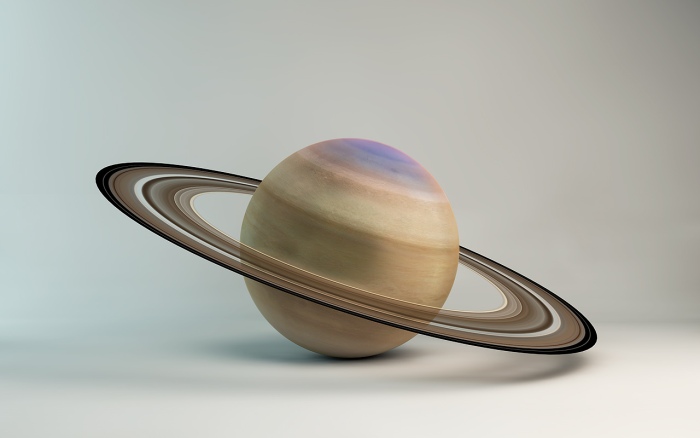
As the nine nights represent the nine planets, we will be focussing on Navaratri and the nine planets with an account of one or another the planets for nine nights. For the seventh night of Navaratri, we will take the planet #Saturn. The colour for the seventh day of Navaratri is grey, so we scribe in #GREY for this seventh day observance of Navaratri. The #Goddess is #Kalaratri.

Today is the seventh day of the Navaratri celebrations which are held for nine nights. All festivals are meant to remind mankind that they should cultivate noble qualities by engaging themselves in activities beneficial to one’s own self and society. Sai Baba made this reference to Navaratri and the Nine Planets:
As part of Navaratri celebrations, people worship different forms of divinity. You should develop sacred feelings and experience divinity. What is the inner meaning of Navaratri celebrations? These nine nights represent nine planets. Each planet has its own significance. However, these planets are not outside, they are within. If your feelings are impure and unsacred, the result also will be the same. You are responsible for the good and bad you think and experience.
Saturn
Many consider Saturn as terrifying among the planets! It is said that all beings fear him for he rules bereavements and misfortunes. He is master of sudden reversals, so thorough that one’s name may well be forgotten among the annals of mortals. His gaze (drishti) is directed downwards for it is utterly destructive. There is a tale of Parvathi wanting a new abode in Kailash, and when Shiva (finally) granted the wish for an abode, Lord Brahma demurred and told, “Not wise, not wise!”, for he could sense the gaze (drishti) of Saturn would bring matters to grief. Shiva went to ask Saturn/Shani to avert his gaze from the new house. To cut a long story short, there was misunderstanding of the signals, Shiva beat his drum (dhamaru) (because he was doing the Tandava dance for Saturn), Parvati misunderstood the message and burned the house down. The moral of the story is that none may escape the drishti of Saturn.
Lord of the sinews, the West and Saturdays, his constellations are Capricorn (Makara) and Aquarius (Kumbh). He is Lord of three Nakshatras, Pushya, Anuraada and Uttara Bhadri. He is also known as the Slow, the Son of the Shadow, the Angular, the Black, the Endless, the End-Causer, the All-Devouring, the Steady, the Controller, the Famished, the Emaciated. His name in Sanskrit is Shanicharaya, “the slow-moving preceptor, the teacher who moves slowly”. Saturn has the slowest movement among the visible planets.
Traditional matters associated with Saturn are disease, death and the dying process – all of these are human and inescapable – the cause of death is birth. One of the main tasks of Saturn/Shani is said to be the cause of disenchantment – and therefore detachment from the ephemera, the fleeting, pointless, meaningless distractions and prattle of life.
Goddess Kalaratri
Goddess Kalaratri, also known as Mother #Kaali, is the seventh form of Goddess #Durga. Devotees worship her on the seventh day of Navaratri. They seek her blessings to eliminate all troubles from their lives.
This form of Durga is believed to destroy all demons, ghosts and negative energies. She is also believed to be the destroyer of time and death. Although, intimidating in appearance, Goddess Kalaratri is benevolent towards all worshipers.
There are many mythological stories that tell us about the transformation of Goddess Durga into Goddess Kalaratri. According to the most common legend, two demons Shumbha and Nishumbha invaded and defeated the realm of demigods. The demigods prayed to Goddess Parvati for help. Parvati readily transformed herself into Goddess Chandika, to battle with demons on behalf of all devas (gods). Goddess Chandika (also known as Chamunda) transformed herself into Goddess Kalaratri and killed both these demons. Goddess Kalaratri fought another demon called Raktveej and kept drinking his blood till he was completely dead, causing her tongue to appear blood-red.
Her vehicle is the #donkey; she has four arms and a blood-red tongue. Goddess Kalaratri is generally portrayed in a dark colour (usually dark blue) and appears to be somewhat wild-looking and threatening. Two arms are holding sabre and lance for slicing off heads; her other arms are held up on abhaya (protection) and varada (blessings, boons) for her devotees.
Saturn and the Feminine
When we look to Saturn we think duty, discipline, responsibility, doing things slowly and getting them right and advancing in life, slowly, carefully. Consider that these are activities Mothers, wives and sisters impart to us as we journey through life. Love that is given by the feminine principle is bounded by discipline and responsibility and considers the long term goal: true humanness. True humanness is a life informed by life-enhancing values, feelings, thoughts and behaviour. Therefore mothers – and all who embody the feminine – take up their task with duty, discipline and responsibility. This love is not dependent on like nor dislike, giving and receiving. The love that the feminine gives – informed by the qualities and and energy that Saturn gives – sees beyond like and dislike, differences between things and focuses on the end goal. True humanness, which forges new higher expressions of life even in the midst of life’s seeming dissolution.
Significance of Navaratri
“The Navaratri festival should not be observed as a festival for worshipping the consorts of Vishnu, Shiva and Brahma. These goddesses symbolise divine potencies. All these potencies are derived from Vishnu. The entire cosmos is a manifestation of the myriad forms of Vishnu. People must recognise this oneness underlying the different forms. All beings breathe the same air as their life-breath. Likewise all the five basic elements are the stuff of nature. But in the Para-Tattwa (the Supreme Principle, the Divine), these do not exist. The elements are mortal. The Divine is immortal. To proceed from the mortal to the immortal, the easiest means is the cultivation of the Divine Love (Prema).
The heart is like a sky wherein the clouds in the form of thoughts hide the Buddhi (the intellect) and the mind representing the sun and the moon. Vairagya (detachment) is the means to get rid of thoughts and desires arising from them. The Devi Puja performed during Navaratri is intended to get rid of worldly attachments and divert the mind toward God. There are four different qualities in man: humanness, the animal nature, demonic nature, and divine nature. When man follows the dictates of the body, he is a prey to his animal nature. When he is subject to the vagaries of the mind, he becomes demonic. When he is following the Atma (conscience), he is manifesting his divinity. When he is governed by all the three- the body, the mind and the Atma, he is human”. Sai Baba, SS, 12/92, p. 305

As the nine nights represent the nine planets, we will be focussing on #Navaratri and the nine planets with an account of one or another the planets for nine nights. For the sixth night of Navaratri, we will take the planet #Venus. The colour for the sixth day of Navaratri is green, so we scribe in #GREEN for this sixth day observance of Navaratri. The #Goddess is #Devi #Katyayani.

Today is the sixth day of the Navaratri celebrations which are held for nine nights. All festivals are meant to remind mankind that they should cultivate noble qualities by engaging themselves in activities beneficial to one’s own self and society. Sai Baba made this reference to Navaratri and the Nine Planets:
As part of Navaratri celebrations, people worship different forms of divinity. You should develop sacred feelings and experience divinity. What is the inner meaning of Navaratri celebrations? These nine nights represent nine planets. Each planet has its own significance. However, these planets are not outside, they are within. If your feelings are impure and unsacred, the result also will be the same. You are responsible for the good and bad you think and experience.
Truth, goodness and beauty – these are the attributes of Divinity and true humanness – that is, human beings acting with integrity – vasudeva sarva midam – ever seeking divinity in all things. In #Sankrit, #Truth is #Sathyam; #Goodness is #Sivam; #Beauty is #Sundaram.The planet Venus contains, releases and perpetually flashes forth different patterns of cosmic energy. Whether the ever-changing energies coming forth from Venus raises us up or pulls us down, is largely dependent on how we understand and take up, integrate and apply the energies of this planet. Venus is our sense of divine love, beauty and grace.
While Venus is taken to represent the passions, and following our happiness, there is a capacity in the influence of Venus to think and to make quite sharp decisions. Venus may access the intellect in what the famous depth psychologist Carl Jung calls the feeling function (in Jungian typology) which makes decisions on the basis of what is valued, what is felt to be important. So Venus has the ability to make the best, balanced and heart-felt decisions.
In the field of possessions, personal property, Venus gives wealth, houses, property and high status. There is nothing wrong with having wealth, it is not filthy lucre as some joke. It is a form of cosmic energy which we may use to create joy and beauty in our living, our homes, a spending of energy in property and vehicles which expresses proper use of wealth, one of the four goals of life. Excessive attachment and dissemination of ego to possessions (my status, my life is my possessions) is lower expression of this cosmic force. A home with beautiful gardens and flowers expresses the Venus energy in its highest essence.
Devi Katyayani
#Ma Katyayani is worshipped on the sixth day of Navaratri. She is one of the most worshipped forms of #Durga and is considered a #destroyer #of #evil. She has four hands and she wields a long sword and a lotus in two of them. She blesses with the third hand and protects with the fourth one.
According to ancient legends, she was born a daughter of Katyayana Rishi, born in the Katya lineage originating from Vishwamitra, thus called Katyayani, “daughter of Katyayana”. Elsewhere in texts like Kalika Purana, it is mentioned that it was Rishi Kaytyayana who first worshipped her, hence she came to known as Katyayani. In either case, she is a demonstration or apparition of the Durga and is worshipped on the sixth day of Navaratri festival.
As per Hindu mythology, Devi Katyayani showers her blessings on those marriageable girls who worship her with complete devotion. This devotion towards Devi Katyayani is part of an age old tradition that started from Gokul in Braja. It is believed that, centuries ago, Gopis in Gokul used to fast during the first month of winter to fulfil their wish of marrying Lord Krishna. Since then, the sixth day of Navaratri has been considered to be significant for those girls who have stepped into the age of marriage and, as such, it is devoted to the worship of Devi Katyayani.
Venus and the Feminine
The Planet Venus is also known in #VedicAstrology as Shukra, the celestial poet, son of Lord Bhrigu (var, Bhrgu), and is sometimes mistaken as the Indian version of Cupid (he is definitely NOT), an archetype of Valentine and true love and more recently, ruler of bedroom pleasures and little else. (The god of love in Vedic tradition is called Manmatha, not Shukra)
People think that Venus am all about sex. It is true that sex is one of the things in the portfolio of Venus, but it is one of the lesser things. Mostly Venus is about beauty, (artistic) truth and children (the end result of reproduction). Venus engages the love flowers, fruits, meadows, honeybees and sweet, refined things. Venus cultivates the sense of refinement; music, dance, laughter and fun are within my purview.
When your soul sings with delight, there is the drishti of Venus; when you celebrate life with colour, beautiful fragrances, wonderful cooking, there Venus is present with energy. Poetry, gardening of flowers, refined emotions, imagination, and renewal of life and spirit. These are the feminine gifts of Venus.
Significance of Navaratri
“Recognising one’s mother as the very embodiment of all divine forces, one must show reverence to her and treat her with love. This is the true message that the Navaratri festival gives us. The Supreme Shakti manifests herself in the form of Durga, Lakshmi, and Saraswati. Durga grants to us energy – physical, mental, and spiritual. Lakshmi bestows on us wealth of many kinds, not just money, but intellectual wealth, the wealth of character, and others. Even health is a kind of wealth. She grants untold riches to us. Saraswati bestows on us intelligence, the capacity for intellectual enquiry and the power of discrimination. The Navaratri festival is celebrated in order to proclaim to the world the power of these goddesses.
One’s own mother is a combination of all these divine beings. She provides us energy, wealth, and intelligence. She constantly desires our advancement in life. So, she represents all the three goddesses that we worship during the Navaratri festival. If the Pandavas were able to become so dear to Krishna and make their lives worthy by serving Him, it was not on account of their own merit or austerities. It was Kunti Devi’s love for them that brought to them such a great fortune. Even when they had to live in the forest or in the House of Wax, she always stayed with them and prayed for their welfare. The Pandavas also reciprocated her love, and that accounts for their final victory. Lakshmana, likewise, was able to dwell in the forest with his brother Rama, serving ceaselessly, only because of his mother Sumitra’s blessings”. Sai Baba, SS, 11/88. p. 290
Today is the fifth day of the #Navaratri #celebrations which are held for nine nights.
#Jupiter
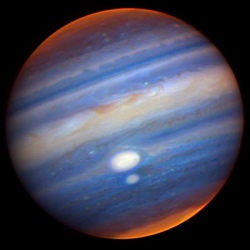
As the nine nights represent the nine planets, we will be having a planetary observance of Navaratri with an account of one of the planets for each of the nine nights. The fifth day of Navratri is marked to worship Goddess Skandamata, mother of #Murugan (var. #Skanda, #Subramanya, #Kartikeya), is worshipped on the fifth day, one should wear #yellow. This colour stands for happiness and brightness. Skanda-Murugan is the leader of the armies against evil.
#Goddess #Skandamata

All festivals are meant to remind mankind that they should cultivate noble qualities by engaging themselves in activities beneficial to one’s own self and society. Sai Baba has told that Navaratri, the nine nights, represents the Nine Planets.
In Hindu mythology, Navaratri celebrates the victory of Goddess Durga over Mahishasura, the buffalo-headed demon. She fought for nine days and nine nights before emerging victorious on the tenth day. Goddess #Shakti in the nine forms is worshipped during the period for knowledge, wealth, prosperity and auspiciousness. Knowingly or unknowingly during this period we also recognize the primordial source of energy (Shakti), which manifests in all living and nonliving.
Sai Baba went on to say that each planet has its own significance. However, these planets are not outside, they are within. So we take the opportunity to examine the energies of the planets within, and examine how the Divine Mother is related to these energies.
#Jupiter
Jupiter is watery in constitution ( #kapha), wears yellow clothes and yellow flowers; his gem is yellow sapphire. A #Brahmin, Jupiter knows all the Vedas and is expert in all forms of knowledge. As #guru, Jupiter has the highest forms of knowledge, philosophy and spirituality (para vidya) and teaches the #sacred paths.
Jupiter is Lord of the body’s fat, of the northeast, rules Thursdays, and the signs of Sagittarius and Pisces. Jupiter is known as the Lord of Worship and as the Guru. He is called Teacher of the Immortals, the Soul, the Advisor, the Lord of Speech, the Golden, the Creator (he is but another form of Brahma) the Compassionate, the Creator of Polity, remover of oppression and the Peaceable. As Guru, one honours one’s own guru by honouring this planet, Jupiter.
Jupiter grants knowledge of Yoga, Astrology, Vastu, science and mathematics, and is the giver of wisdom which overcomes obstacles. Jupiter as guru guides us in following dharma (the path of righteousness within and without) for dharma is the basis of the Universe itself. Jupiter indicates such domains of principle as law, religion and philosophy. He is the planet of intelligence.
Jupiter’s energy is that of #expansion; it expands everything it touches, making it bigger and greater. Some call Jupiter a multiplier, for this is what Jupiter does. If Jupiter is well placed in your horoscope its influence will be toward humanitarian activity, compassion, morality, caring, spirituality, optimism, faith and good judgement. One will be powerful, respected, healthy, wealthy, and a leader in society. Ambitious people who are aiming for high office whether it be politicians, priests, executives or judges are all under the influence of Jupiter. When Jupiter is afflicted in one’s astrological chart it will bring poverty, anger, arthritis, illness of the liver and pancreas, and overall bad luck.
Goddess Skandamata
Skandamātā is the fifth form of Hindu Goddess Durga. Literally meaning Mother of Skanda, her name comes from two words – Skanda is one of the names for the war god and her son Kartikeya (or Murugan or Subramanya) and Mata is the term for mother.
Skandamātā is four-armed and rides on a lion. She carries a lotus. Her one hand is in blessing posture. Lord Skanda can be seen in her lap. She possesses four arms out of which two often hold the lotus flowers. One of her hands is always in the boon-conferring gesture and with the other she holds her son Skanda in her lap. Her complexion is white and she is seated on the lotus. So, she is also called Goddess with a lotus-seat (Padmāsana). The lion is her vahana (vehicle).
Significance of Navaratri
“During the Dasara festival, three goddesses – Durga, Lakshmi and Saraswati -are worshipped according to certain traditional practices. Durga represents the prodigious power of nature (Prakrit-shakti). As against this power of nature is the Paraa-Shakti (the power of the spirit). When spiritual power is predominant, the power of nature is kept under control. When spiritual power is weak, the power of nature becomes predominant. This is illustrated by the example of smoke and fire. When smoke is predominant, the fire is suppressed. When the fire is blazing, the smoke vanishes. Hence, to enhance the power of spirit and limit the power of nature, man has to cultivate detachment (Vairaagya). To the extent that power of nature is under control, to that extent spiritual power grows. “Ichchaa-Shakti” is one of the of several other potencies like intellectual power, the discriminating capacity and others. To develop this “Ichchaa-Shakti” (will power), one has to worship “Devi”. This calls for the cultivation of Tyaaga (detachment or renunciation). For instance, if one has a desire for various drinks, he can bring the desires under control by giving up, to begin with, the desire for one of them. Thereby the Will Power (Ichchaa-Shakti) is developed and in due course, it becomes easier to give up other desires.
In Vedantic parlance this is described as “Vairaagya” (renouncing attachments). Vairaagya is not abandonment of hearth and home and retiring to a forest. It means developing godly thoughts and reducing worldly feelings. When this balanced development takes place, one acquires control over the powers of nature (Praakrita-Shakti). When these powers are got, the mental power in a person increases. Durga represents the Praakrita-Shakti and Lakshmi represents the Thought Power (Sankalpa Shakti). Vaak-Shakti (the power of speech), is represented by Saraswati. In order to acquire these three powers, various forms of worship are performed during the Navaratri festival. But prayers alone are not enough. Prayers should not be just from the lips. They should emanate from the heart. The heart (Hridaya) symbolizes the Ocean of Milk (Ksheera-saagara). When Lakshmi emerges, purity of speech follows. Whatever you speak should conform to truth.” Sai Baba, SS. 12/92. pp.304 & 305.


As the nine nights represent the nine planets, we will be having a planetary celebration of Navaratri with an account of one of the planets for each of the nine nights. The second planet is The #Moon. The colour for the second day of #Navaratri is #WHITE, so we shall scribe in white with an added background so that white may be easily read for this second day’s observance of Navaratri
Today is the second day of the Navaratri celebrations which are held for nine days (Nava Rathrulu). All festivals are meant to remind mankind that they should cultivate noble qualities by engaging themselves in activities beneficial to one’s own self and society. Sai Baba made reference to Navaratri and the Nine Planets:
As part of Navaratri celebrations, people worship different forms of divinity. You should develop sacred feelings and experience divinity. What is the inner meaning of Navaratri celebrations? These nine nights represent nine planets. Each planet has its own significance. However, these planets are not outside, they are within. If your feelings are impure and unsacred, the result also will be the same. You are responsible for the good and bad you think and experience.
The Moon
#Chandra, (lit. “shining one”) The Moon is one of the Gods and a most important planet in Vedic Astrology. He is described as young, beautiful, fair; two-armed and having in his hands a club and a lotus. He rides his chariot (the moon) across the sky every night, pulled by ten white horses or an antelope. Although the antelope is the animal most commonly depicted with Him in iconography, the rabbit is also particularly sacred to him and all rabbits are under his protection. He is connected with dew, and as such, is one of the gods of fertility. As #Soma, presides over Somvar or Monday.
The Moon rules Mother and maternal matters, contentment in the home, emotions and bodily fluids, as the Moon is kapha dosha. Kapha dosha signifies water, fluids, fluids in the body and it is of an earthy nature. It has dimensions of loyalty, faithfulness, love and attachment. The Moon waxes and wanes monthly and as it is the fastest moving planet, it is easily afflicted in transits. The Moon is strongest when it is 180° from the Sun; the closer the Moon comes to the Sun, the lesser its energy and strength.
Moon signifies responsiveness, loyalty, dependence. It is traditional, conservative, conventional in attitudes. It delivers the energy of belonging, seldom rebels, and, when cool, has high frustration tolerance. Moon gives friendly attitudes, life-long associations and doesn’t like to hurt other people. It can accept feedback from others but does not like confrontations, particularly when they are personally hurtful. The Moon gives good parents who are good providers.
Day 2
#Goddess #Brahmacharini
Brahmacharini means a devoted female student who lives in an Ashrama with her Guru along with other students. It is also the name of the second aspect of the goddess Durga (Parvati). The goddess is worshipped on the second day of Navratri (the nine divine nights of Navadurga). The goddess Brahmacharini wears white clothes, holds a japa mala (rosary) in her right hand and Kamandal, a water utensil in her left hand.
Charini is the feminine version of one who is a charya, which means “occupation with, engaging, proceeding, behaviour, conduct, to follow, moving in, going after”; so to seek, to explore, to experience, to know. One does not dare to speak of the divine without internal, inner experience. For the Divine is that which is known only; it cannot be thought about, read about, nor experienced in discussion with others. One pursues the experience of the Divine – like Bhakta Meera, also known as Mirabai:
I am your slave.
Bind me in tethers, Mira’s your slave.
She wakes up at dawn,
sits in the garden,
haunts the pathways of Brindavan forest
making up ballads.
Fever, memory, craving,
birth after birth they come with me.
I slip on a saffron robe
hoping to see you.
Yogins come to Brindavan to know oneness,
hermits perform terrible spells,
holy men come to sing gospels –
but Mira is deeper, Lord,
and more secret.
She waits with a ruined heart every night
by the river
just for a glimpse.
The Moon is often thought of as feminine, just as the rules Mother and maternal matters, contentment in the home and emotions. The moon is a feminine symbol, universally representing the rhythm of time as it embodies the cycle. The phases of the moon symbolize immortality and eternity, enlightenment or the dark side of Nature herself. It might reflect inner knowledge, or the phases of man’s condition on Earth, since it controls the tides, the rains, the waters, and the seasons. It is the middle ground between the light of the sun and the darkness of night, and thus often represents the realm between the conscious and the unconscious.
On this second day of Navaratri, we have learned that the day is ruled by the Moon, the colour is white and the Goddess is Brahmacharini Devi, the Goddess of #Swadhisthana #Chakra. The word swadhisthana can be translated as “the dwelling place of the self”. Swadhisthana Chakra develops around the ages of 6 months to 2 years. This chakra governs our relationship to the feminine, our reproductive area and our femininity. We are also determining the safety of expressing our feelings, experiencing emotions and also connecting to our intuition.
The element of Swadhisthana Chakra is #water, which equals cohesiveness. A balanced second chakra leads to feelings of wellness, abundance, pleasure, and joy. When this chakra is out of balance, a person may experience emotional instability, fear of change, sexual dysfunction, depression, or addictions.
We have learned about the name the Goddess of this day – Brahmacharini – and that charini is the feminine of “occupation with, engaging, proceeding, behaviour, conduct, to follow, moving in, going after”. We cannot live without the feminine aspect of the #Divine #within, and Navaratri represents a call toward exploring and experiencing this feminine divine within. We are ask to follow, to move in, to go after, just like Mirabai, the Rajput princess who lived for and sought her Lord Krishna alone. It behooves us to seek the feminine within, to honour it, for in honouring the feminine, the Mother Goddess, the Shakti or female energy principle within, we honour Mother Earth herself, who is also a Goddess, Bhu-Devi. We honour our own Mother, our sisters, aunts, grandmothers and all the generations of women who have come before us and gifted us. So also, we take care of the resources of Mother Earth, as per Sri Sathya Sai Baba:
Significance of Navaratri
“The Navaratri celebration is an occasion for revering #nature and considering how natural resources can be used properly in the best interest of mankind. Resources like water, air, power and minerals should be used properly and not misused or wasted. Economy in the use of every natural resource is vital. Pollution of the air has many evil consequences. The inner significance of observances like singing in the villages and devotional singing is to fill the atmosphere with sacred vibrations and holy thoughts. The inauguration of the Navaratri celebrations means that you should use this occasion for offering worship to nature and resolving to make sacred use of all natural resources.” Sai Baba. SS, 11/92, p. 269

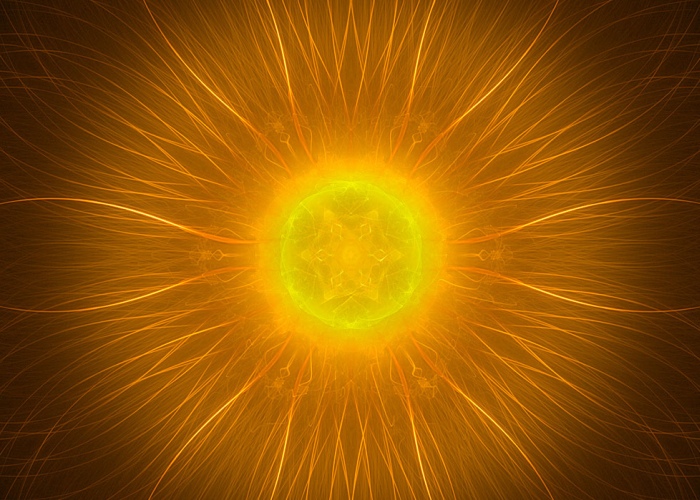

As the nine nights represent the #nine #planets, we will be having a #planetary #celebration of #Navaratri with an account of one of the planets for each of the nine nights. The first planet is The #Sun. The colour for the first day of Navaratri is #ORANGE, so we shall scribe in Orange for this first day’s observance of Navaratri.
Today is the first day of the Navaratri celebrations which are held for nine days (Nava Rathrulu). All festivals are meant to remind mankind that they should cultivate noble qualities by engaging themselves in activities beneficial to one’s own self and society. Sai Baba made reference to Navaratri and the Nine Planets:
As part of Navaratri celebrations, people worship different forms of divinity. You should develop sacred feelings and experience divinity. What is the inner meaning of Navaratri celebrations? These nine nights represent nine planets. Each planet has its own significance. However, these planets are not outside, they are within. If your feelings are impure and unsacred, the result also will be the same. You are responsible for the good and bad you think and experience.
The Sun, self-effulgent, radiating light and heat along a perennial, eternal path of righteousness, reflecting the eternal order of the Universe. The Sun is a fragment of the Central Sun of all Universes, and thus, radiates the life-force of all to all, without fear or favour. The Sun God grants refuge to all who seek refuge.
There are numerous galaxies, containing thousands of Suns and solar systems. The Sun that we have for our solar system is one of the many Suns though there has to be one final Sun who is eternal and carries out the functions of the Sun for all the manifest worlds and universes. Our Sun, Surya, as representative of the eternal Sun is no different from that eternal Sun itself. The eternal sun at the macro-cosmic level is the same as the Sol, the Surya within our solar system. The fire, the light within our bodies is but a spark of the eternal sun within, called Suryanarayana, the Sun that dwells within all.
Day One
#Goddess #Sailiputra - daughter of the Himalayas
The Divine Mothers are known as the Nava #Durga (9 Names of Durga). Each of the days honours an aspect of #Divine Mother and step by step the aspirant. On the first day, we honour Durga as Sailaputra – Daughter of the Himalayas.
Sailaputra was born to Himavat the King of Himalaya. Putri means daughter and Shail from shaila means mountain. Sailaputra means the daughter of the mountain. She is also known as Sati Bhavani, Parvati or Hemavati. In her previous birth, she was a daughter of Daksha.
She is also known as #Parvati and Hemavati. Her vahana is the bull, hence she is also known as Vrisharudha. Because of Her importance amongst the other Goddesses, She is worshipped on the very first day of Navaratri. Just like Goddess Satieven Sailaputra got married to Lord Shiva. She is always shown with two hands, the right hand holds a Trishul and the left hand holds a lotus flower.
Humans are both masculine and feminine in their inner nature. All have X and Y chromosomes; it is the final pairing of chromosomes that determines our gender. Depth psychologists teach that in the male, the soul is the feminine principle, and in the female, the soul is the masculine principle. The psychologists tell us to honour these principles within in order that we have a balanced self-respect. Sai Baba spoke above about the planets these planets are not outside, they are within; the Sun is called Sol, just as the Soul within is the self effulgent inner sun within us.
The outer Sun also is a Mother principle within us all. Just as the cow is Go-Matha and all that comes to us from the cow – the milk provides ghee which has many uses; the urine is antiseptic and can be used for washing and purifying; the cow-pats have many uses including fuel for cooking. So also, the Sun as Mother gives us nurturance with warmth and heat; it creates new life in nature with sunlight, and it gives essential light energy to us all, within and without, for the Sun is Suryanarayana, the inner Sun within us all.
We may pray for the feminine energy of the Sun like so:
Om Bhaskaraya Vidmahe
Maha Divyakaraya Dheemahe
Tanno Surya Prachodayat.
Significance of Navaratri
Navaratri means nine nights. Darkness is associated with night. What is this darkness? It is the darkness of ignorance. The purpose of the Navaratri celebration is to enable man to get rid of nine types of darkness which have taken hold of him. When a reference is made to Devi, it signifies the unified form of Durga, Lakshmi and Saraswati. The three together represent Shakti. Shakti is the energy that accounts for all the phenomena of Prakriti (Nature). Nature is energy and the controller of that energy is the Lord.
Prakriti (Nature) is made up of the three qualities, Sattva, Rajas and Tamas. Saraswati represents the Sattwa Guna. Lakshmi represents the Rajo Guna and Parvati represents the Tamo Guna. As Prakriti (Nature) is made up of these three qualities (Sattwa, Rajas and Tamas), to get control over Nature, man has been offering worship to Durga, Lakshmi and Saraswati. These are not goddesses but deified symbols of the three qualities. (Sri Sathya Sai Baba, 27 September 1992)


